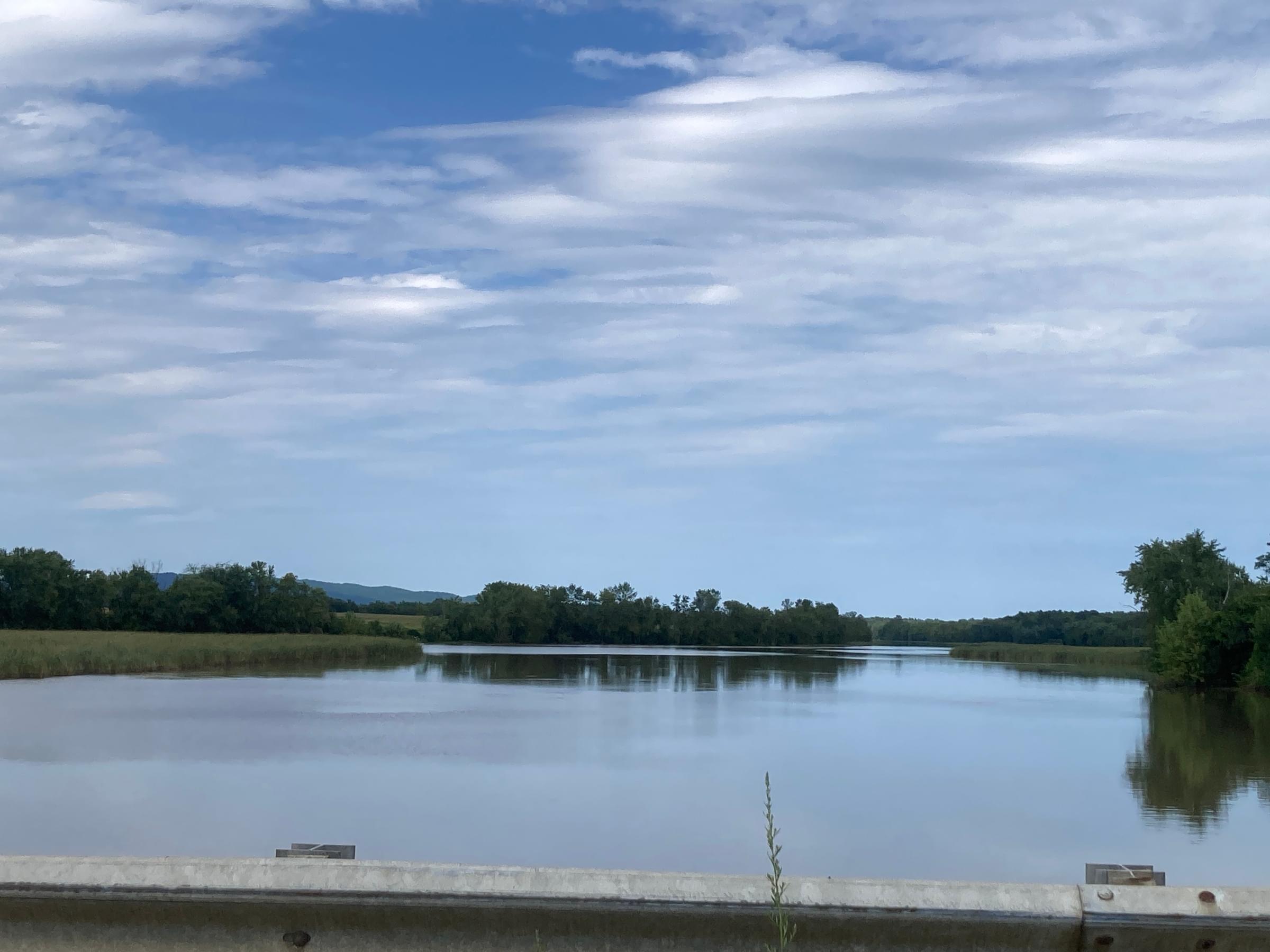Dead Creek--Panton Road crossing

Dead Creek--Panton Road crossing
Addison, Vermont 05491
Dead Creek Wildlife Management Area Official WebsiteDead Creek Wildlife Management Area (Otter Creek Audubon Society) webpage
Dead Creek Wildlife Management Area (Audubon IBA) webpage
Dead Creek Wildlife Management Area brochure and map
About this location
About Dead Creek Wildlife Management Area
See all hotspots at Dead Creek Wildlife Management Area
Flowing north through the Champlain Valley, Dead Creek empties into Otter Creek near its mouth on Lake Champlain. The Dead Creek Wildlife Management Area (WMA) is composed of cultivated farmland, wetlands, grasslands, and early and late-successional hardwood forest. Several dams were constructed to greatly increase open water and permanently flood wetland areas. Vermont Natural Community types include Cattail Marsh, Deep Bulrush Marsh, and Valley Clayplain Forest.
This site is managed and protected by the Vermont Department of Fish and Wildlife. A large portion of the area is a refuge and is off-limits to the public. Marshbird populations are monitored through the Vermont Marshbird Monitoring Program. Threats include invasive species, agricultural run-off, and intensification of agriculture around the property.
Dead Creek Wildlife Management Area is a 2,858-acre tract in the towns of Addison, Panton, and Bridport. A public viewing area is located along the south side of VT-17, one mile west of VT-22A, that provides excellent viewing of the huge fall concentrations of Canada and snow geese. There is also small boat access on VT-17 as it crosses the Creek.
This WMA has seven impoundments that create cattail-dominated wetlands. Water levels are actively managed. Surrounding uplands are a mix of active agricultural lands, old fields, and clay-plain oak-hickory forests. Hunting, fishing, and trapping are allowed in portions. Access to sections of the WMA is regulated because the area is primarily a waterfowl refuge. Dead Creek WMA is owned by the State of Vermont and managed by the Vermont Fish and Wildlife Department.
Dead Creek originally flowed north sluggishly to Otter Creek through a fairly flat valley. The construction of dams has created impoundments and added much more open water and cattail marsh.
The soils in the area are mostly fine clays that inhibit drainage. The oak-hickory clay plain forest community is adapted to such poorly drained soils. This was a widespread community in the Champlain Valley before European settlement. Dominant tree species are shagbark hickory, white oak, swamp white oak, red oak, burr oak, and white pine. Hophornbeam is the most abundant subdominant tree.
Besides open water, there is extensive emergent cattail marsh in Dead Creek WMA. There is also broad-leaved emergent marsh, deep bulrush marsh, and buttonbush swamp. Pondweeds, broad-leaved arrowhead, arum-leaved arrowhead, waterweed. swamp-milkweed, bristly sedge, big-headed bulrush, wool-grass, and water-dock are some of the aquatic plants that occur. One may find a flowering rush, which is naturalized from Europe. Parasitic dodder, jewelweed, and sweet joe-pye weed grow on the banks.
Some areas are managed for moist soil. They are flooded for brief periods and then drained, and support plant species which enhance waterfowl habitat in the fall. Drawdowns benefit migrating shorebirds which are attracted to mudflats and shallow water held for them until late summer. The uplands are a mixture of farmland, old fields, and clay plain forest. The farmland and old fields are managed to improve wildlife habitat. In many areas, there is a dense line of shrubs ringing the marshes, which provides wildlife cover and food. These shrubs include chokecherry, meadow-sweet, downy arrowwood, gray dogwood, round-leaved dogwood, and prickly ash.
Features
Roadside viewing
Restrooms on site
Wheelchair accessible trail
Entrance fee
Content from Dead Creek Wildlife Management Area (Audubon IBA) webpage, Otter Creek Audubon Society, Vermont’s Best Birding Hotspots by Vermont Agency of Natural Resources, and Dead Creek Wildlife Management Area guide and map
Last updated October 8, 2023
